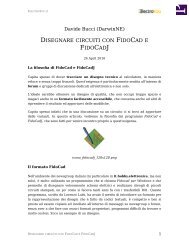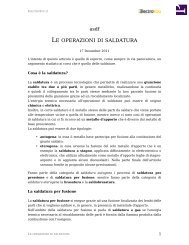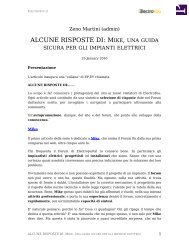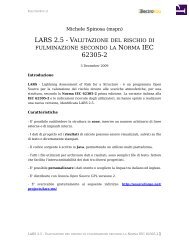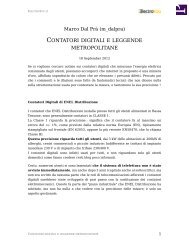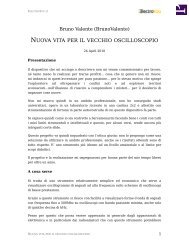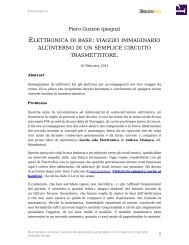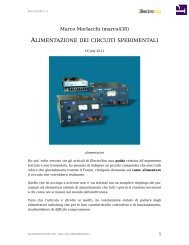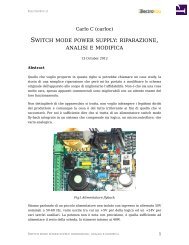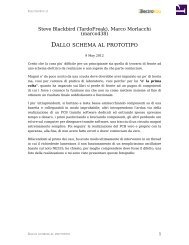ALCUNE RISPOSTE DI: BRUNO VALENTE, - ElectroYou
ALCUNE RISPOSTE DI: BRUNO VALENTE, - ElectroYou
ALCUNE RISPOSTE DI: BRUNO VALENTE, - ElectroYou
Create successful ePaper yourself
Turn your PDF publications into a flip-book with our unique Google optimized e-Paper software.
ELECTROYOU.IT ZENO MARTINI (ADMIN)<br />
Sempre durante questa fase si chiude il mosfet di sinistra cortocircuitando la prima<br />
cella del filtro azzerando così la tensione all’ingresso del comparatore di destra e<br />
spegnendo il cicalino.<br />
Prima modifica<br />
Ho fatto alcune modifiche: non mi piaceva il multivibratore che, con la scusa del rail<br />
to rail, lo avevo fatto lavorare con delle soglie troppo basse e poi mi sono accorto che<br />
la parte che commuta la resistenza da 100ohm poteva essere semplificata eliminando<br />
un mosfet. Se la tensione sulla resistenza da 100 ohm arriva al massimo a 2V ci<br />
possiamo permettere di montare il mosfet in quest'altro modo visto che rimangono<br />
4.2V tra gate e source per pilotarlo e che dovrebbero essere sufficienti. Però mi<br />
aspettavo almeno qualche commento o qualche critica...cos'è 'sto silenzio?<br />
Seconda modifica<br />
Allarme 3 kW: prima revisione<br />
Allarme 3 kW: circuito finale<br />
<strong>ALCUNE</strong> <strong>RISPOSTE</strong> <strong>DI</strong>: <strong>BRUNO</strong> <strong>VALENTE</strong>, VIVERE L'ELETTRONICA 8



